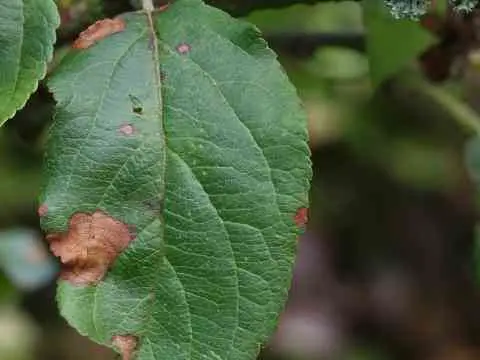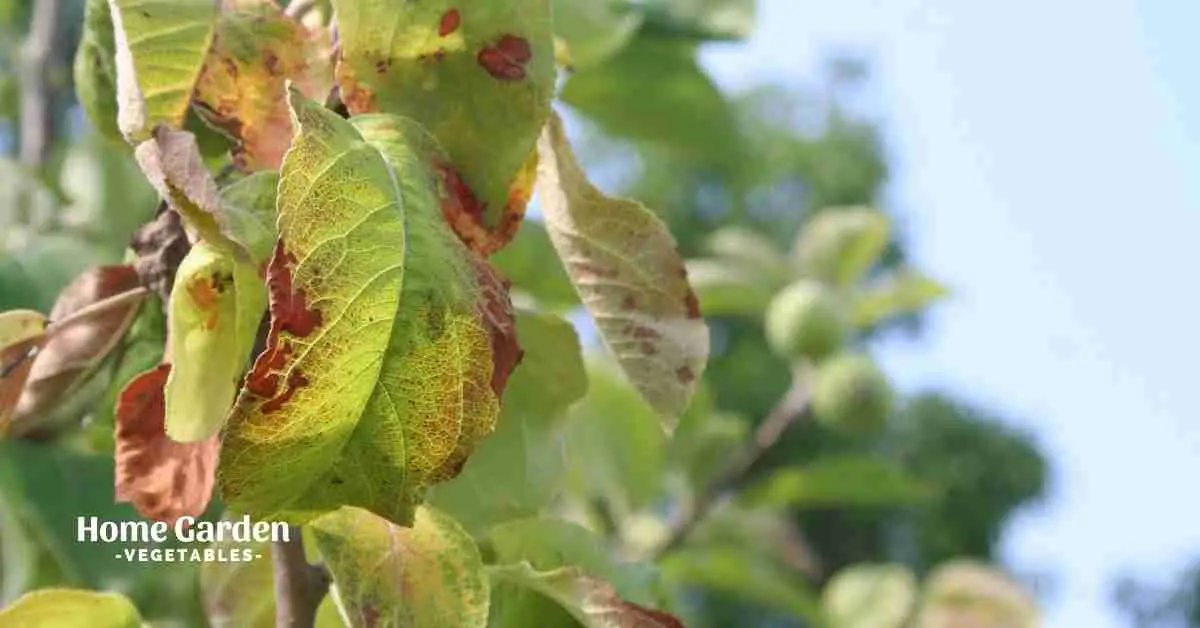Apple tree is a beautiful sight in any garden. Not only does it add to your outdoor landscape, but also bears one of the world’s healthiest fruits. However, unfortunately, apple trees are susceptible to a wide range of diseases, especially when not growing in the ideal conditions.
Apple tree brown spots on leaves could suggest a number of problems. You’ll also have to look for some accompanying systems before deciding on the right course of actions to treat the problem. Here’s a list of all the apple tree diseases that show up as brown spots on leaves along with some suggestions on how to fix it.
Reader Poll: What online courses would interest you?
Apple Scab
McIntosh, Cortland, and Macoun are particularly the varieties that fall prey to this disease. If the tree is suffering from apple scab, brown or olive green spots appear on the apple tree leaves. Eventually, the leaves will curl and fall off. Infection can limit flower production. The disease also affects the fruit. Green spots appear on the fruit’s surface which can become darker and crack over time. Infected fruit often drops to the ground.

The disease can be controlled by pruning and discarding the infected leaves. Spray the trees once a week with 2 tablespoons of neem oil mixed in a gallon of water. Rake and remove fallen leaves from your garden before May to prevent the disease from overwintering. William’s Pride, Liberty, and Easy-Gro are some of the scab-resistant varieties to grow if you don’t want to deal with the problem in the first place.
Alternaria Blotch
Alternaria blotch is a common disease that affects apple trees. It’s caused by a fungal pathogen called Alternaria mali. The symptoms will start appearing in late spring to early summers as purplish to back spots on leaves. With time, the lesions enlarge and turn darker in color. If the lesions appear on the petioles, the leaves may turn yellow and drop prematurely. Severe defoliation on the apple tree can also cause premature fruit drop.
Subscribe to our newsletter!

To manage alternaria blotch on apple trees, keep the surroundings of the tree well raked of fallen leaves and plant debris to prevent the spread of fungal spores. Prune and discard the infected leaves and spray the tree with neem oil solution every few days until the symptoms completely disappear. Commercial fungicides, including Flint 50WG, Luna Sensation and Inspire Super are effective against the disease. In case of chemical fungicides, use them in moderation, as directed on the packaging, so they won’t cause any negative effects on your apple tree or the yield.
Frogeye Leaf Spot
Frogeye leaf spot is also a fungal disease very similar to alternaria blotch, and is controlled in much the same way. Frogeye leaf spot is caused by the fungal pathogen called Botryosphaeria obtusa. It is the same pathogen that black rot of apple fruit and limb cankers. The symptoms appear as small purplish spots on leaves 1 to 3 weeks after petal fall. The spots enlarge over time, acquiring a brown center and purple margins. The distinguishing symptom is the appearance of black pycnidia in the center of older spots on the upper surface of leaves. Severe infections lead to chlorosis and defoliation.
Annual winter pruning should be coupled with the removal of cankers and mummified fruit helps control the fungus from overwintering. Remove the prunings from the perimeter of the orchard so they won’t cause further infections. Bulletin 506 is a common fungicide used by commercial growers to cater the problem, while backyard growers often use Bulletin 780 to fight frog eye leaf spot.
If you do suspect you have this on one of your apple trees please get in touch as I would like to include a photo to help others identify this.
Entomosporium Leaf Spot
Caused by the fungus Entomosporium maculatum, Entomosporium leaf spot is a common disease that not only affects apple trees, but loquat, Red Tip Photinia and certain pear cultivars as well. The fungus attacks the trees during cool, wet weather. Though only a few leaf spots won’t cause any significant damage, heavier infections can cause excessive defoliation and ultimately the death of the plant. The leaf spots are generally redder than in the ones discussed in the other diseases and have a yellow halo around them.
Avoid overhead irrigation to prevent moist conditions and always water at the base of the tree to keep the foliage dry. Regularly rake the surroundings of fallen plant debris and keep the canopy thinned to allow air from getting to the inside leaves and preventing humidity. If cultural management isn’t enough to resolve the problem, as in the case of heavier infections, chlorothalonil is an effective fungicide to fight Entomosporium leaf spot.
If you do suspect you have Entomosporium leaf spot on one of your apple trees please get in touch as I would like to include a photo to help others identify this.
Cedar Apple Rust
Caused by the fungus Gymnosporangium juniperi-virginianae Schwein, is a common disease that affects species from the rose family, including apple and hawthorns. The leaf spots are yellow, and eventually turn to orange-red with a red border. Directly below the leaf spots, on the lower surface of the leaves, you’ll find short fungal tubes sticking out. Infected fruit will show irregular brown spots on the surface which don’t generally affect the inside of the fruit.
Prune and remove the infected branches and avoid planting young trees near other susceptible plants from the rose family. Prune and remove woody gals in winter before gelatinous structures form and spread fungal spores in spring. Fireside, Freedom and Liberty are some of cedar apple rust resistant varieties to plant in orchards where this disease is prevalent.
If you do suspect you have this on one of your apple trees please get in touch as I would like to include a photo to help others identify this.
Conclusion
Now that you know all the possible reasons why your apple tree leaves might be showing brown spots, it’s your job to investigate the disease further and pinpoint exactly which disease is causing the symptoms. Follow the appropriate treatment to resolve the issue and prevent the infection from returning. Planting resistant varieties, regular pruning, raking and removing plant debris, and avoiding overhead watering are some healthy gardening practices that will keep your plants and trees free of diseases.

